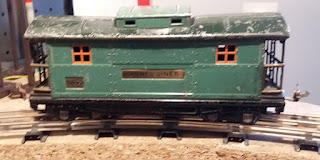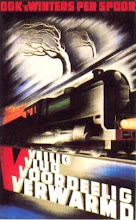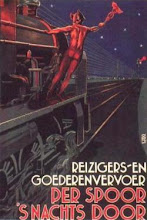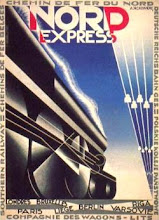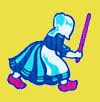A few weeks ago, we finally visited
Train world in Brussels. We had planned to visit the Belgian railroad museum already for a few years, but due to the daily stuff, this has been postponed for too long. Nevertheless on a bleak winters day, we went to Schaerbeek railway station. I remember this station from my early childhood as the railroad station from which the sleeping trains to Biarritz left as the start of the summer holiday.
The entrance now is the side-hall of the original railway station. The original grandeur of the Victorian era can still be witnessed here, with the marble stone plating of the floor and walls. The personnel is friendly and for a relative small entrance fee you have access to a beautiful train museum. Via the restaurant (RN express) and the ticket tourniquets you walk in the large hall of the original train station Schaerbeek. There are several beautiful large scale models of old Belgian steamers. In the old wooden ticket booths there is a display of railroad uniforms, tickets and ticket vending machines. Next, you will exit the station at the back and you will see a remarkable large steam-powered railroad crane for accident recovery etc. It is an impressive large machine from deep in the nineteenth century, loving named Juliette.

After a small stroll you will enter a new building that looks remarkably much as a metal box. Again you will have to scan your tickets and then you enter the real large museum building. It is composed of four different huge halls which are packed with trains.
The first hall is very dark and contains five early steam engines, including the Pays du Waes. A small original steam engine from 1844 (so not reconstructed, but the real engine from 1844).
The engines are magnificent, however, due to the darkness in the hall, they are not so easy to photograph. Which is another good reason to purchase the museum catalog. We spend a good hour in this first hall, just to appreciate these old and occasionally quirky engines, but then they were engineered in the UK, so what else could one expect.
The second hall is filled with the jewel of Belgian railroading; the 12-series. A record keeping Atlantic stream-lined steamer from the thirties. Although a small rail motor and beautiful preserved coaches are also present in this hall, you will not notice them, because it is the 12004 engine that stands in the middle. The driving wheels are simply huge and the engine itself is remarkably high.
The third hall is filled with old coaches and in a corner they pilled up the remains of a modern vehicle which recently crossed the tracks when a train passed and shattered it. Although the airbags must have blown, the driver did not stand a single chance; a pile as mortal reminder.
The fourth hall contains some classic Belgian diesel and electric engines, post coach and a luxurious TEE coach from the seventies. A beautiful refreshments car sells beverages from a forgotten time.
Then you will walk the metal stairs (or take the elevator) to the attic where some old goods cars are placed under the roof.
A long walkway with models of bridges and fly-overs, a large model train display, the noses of the Eurotrain and Italo will bring you to the Belge. This is beautiful steam engine that flies over the museum shop.
So, all in all, it is an impressive train museum. In my humble opinion a must-see for train-lovers. Since there is much to see, a true enthusiast can easily spend a full day here. And since the restaurant is placed outside the museum, it is wise to eat before you enter, otherwise you have to negotiate your way out and in with the help of the museum shop personnel.





